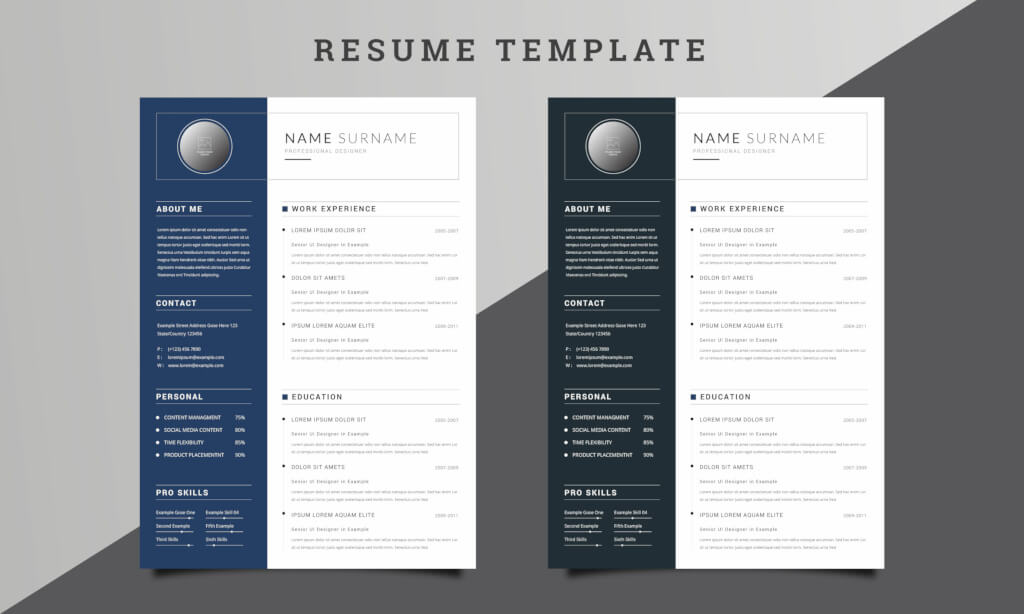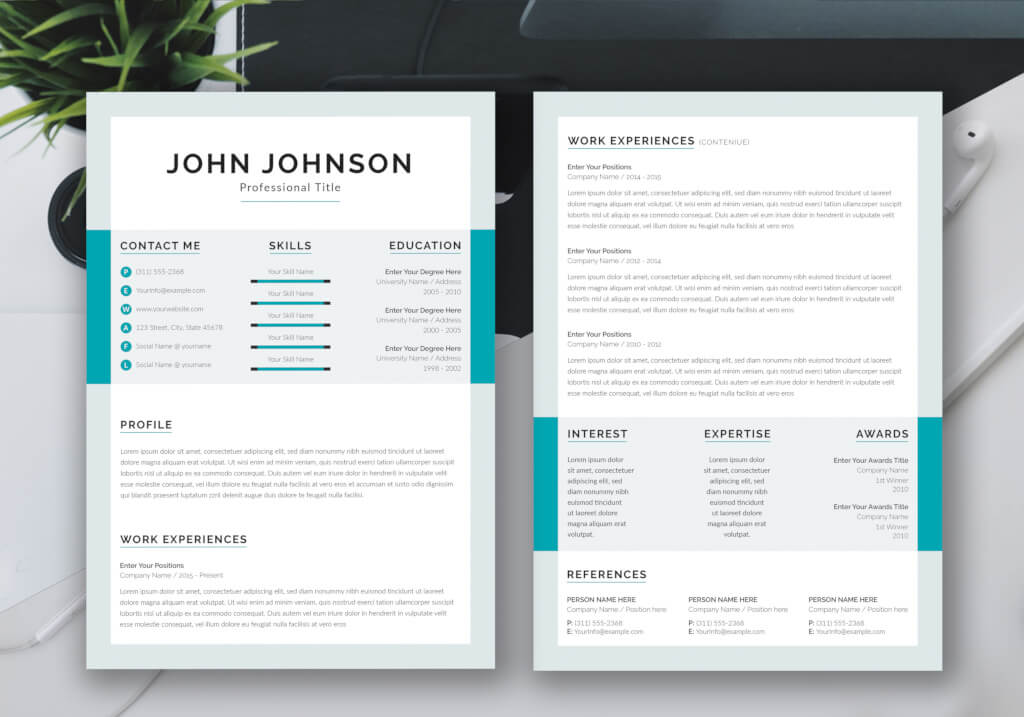Last updated on - © Free-Sample-Letter.com
In order to land your dream job, you'll need a powerful resume that will make an impression on potential employers. In this blog post, we will teach you how to compose a successful CV that will help you get the job you want. We'll provide tips for formatting and designing your CV, as well as advice for what to include and what not to include. So don't wait any longer to start writing your successful CV today!
A Curriculum Vitae (CV) is a document that outlines your education, work experience, skills, and other accomplishments. It’s used to apply for jobs, scholarships, and other opportunities.
The purpose of a CV is to provide potential employers with detailed information about your qualifications and experience. A well-written CV can help you stand out from the competition and increase your chances of being selected for an interview.
Why is it important to have a good CV? Because a strong CV will demonstrate that you’re qualified for the job and have the skills and experience required to excel in the role. If you want to make sure your CV stands out from the crowd, be sure to avoid common mistakes made by job seekers.
There are no crucial differences between a CV and resume - both documents are used to provide potential employers with information about your qualifications and experience. However, there are some slight distinctions between the two:

Before you start writing your resume, there are a few things you should keep in mind.
First, you need to decide on a format and style for your CV. There are many different formats to choose from, so be sure to select one that will enhance your qualifications in the best possible light. You should also determine on a font and font size that is easy to read.
Secondly, you need to think about what to include and what not to include in your CV. Be sure to list your work experience and education in reverse chronological order, and highlight your skills and accomplishments. However, you should avoid including information that is irrelevant or could potentially harm your candidacy (such as negative comments about previous employers).
➤ Note : Think about the order you’re going to present your CV. Present the education section first if you have more qualifications than work experience and vice versa.
Remember that each job requires different skills and experience, so make sure to tailor your resume to the specific position you’re applying for. Finally, take the time to proofread and edit your CV before sending it out. A well-written CV can make a positive impression on potential employers, so make sure it’s polished and error-free.
There are several different CV layouts that you can choose from, depending on your qualifications and work history. The most common format is the chronological CV, which lists your work experience in reverse chronological order (most recent first). This is ideal for job seekers with a steady work history.
Another common format is the functional CV, which highlights your skills and qualifications instead of listing your work experience. This is especially true for jobseekers who have interruptions in their career path or who change careers.
Finally, there is the combined CV, which combines elements of both the chronological and functional formats. Perfect for applicants who want to highlight both their work experience and their skills.
Whichever CV format you choose, make sure to tailor it to the specific job you’re applying for. Of course, the header or sidebar should contain your up-to-date personal information such as full name, local address, email address and telephone number for easy contact.
When writing a resume, it's important to start with a strong introduction that will capture the employer's attention. One way to do this is to start your CV with an important objective or a strong title. This will help to quickly convey to the employer what you’re looking for and why they should consider you for the job.
If you’re applying for a specific position, be sure to tailor your objective or title to match the job requirements. For example, if you’re applying for a position as a web developer, your goal might be "To obtain a position as a web developer with a company where I can use my skills and experience." For a job in sales, your objective might be "Salesperson with 10 years experience".
Whatever you choose, make sure your CV's statement should be short and concise. It should refer to what you want to do with your career and where you’re at the minute. This objective should change with regards to the positions you apply for and indeed as your skills base grows.

When writing a resume, it's important to list your work experience in reverse chronological order. This will ensure that the most recent experience is at the top of the list, and that the employer can quickly see your most recent accomplishments.
Your professional experience should be mentioned in paragraph form, with each position heading followed by a brief summary of your duties and accomplishments. Start with the most recent position and work your way backwards. Be sure to include the name of the company, your job title, and the dates you worked there. If you’re currently employed, you can simply indicate "present" under the job title.
If you have any gaps in your work history, be sure to explain them in your cover letter instead. Breaks can sometimes be a warning to potential employers, so it's important to be upfront about them and explain why they occurred.
In addition to listing your work experience, it's important to highlight your skills and accomplishments. This will show the employer what you’re capable of and what you have accomplished in the past.
Your technical skills are the specific abilities and knowledge that you have acquired through your education or work experience. These skills are directly related to the job you’re applying for, and they can include things like software programming, web development, spoken languages or accounting.
Your soft skills are the personal qualities that make you a good employee. This can be things like teamwork, communication, or problem-solving. Many employers place a high value on soft skills, so be sure to highlight them in your resume.
There are several different ways to do this. You can list your skills at the beginning of your CV, or you can list them under each individual position. You can also highlight specific accomplishments such or awards. Whatever route you choose, make sure to focus on your strongest capabilities and most impressive accomplishments.
Another important part of a resume is your education. In addition to highlighting your work experience and skills, it's important to showcase your education in your CV. This will show the employer that you’re qualified for the job and that you have the necessary knowledge.
Your education should be listed in paragraph form, with each degree heading followed by a brief summary of your studies. Start with the most recent degree and work your way backwards. Be sure to include the name of the school, your major, and the dates you graduated. There too, if you have any gaps in your education, be sure to explain them in your cover letter instead.
If you have any language fluency or hobbies that could be relevant to the job, you would like to showcase in your CV, be sure to include them. This can be a great opportunity to show the employer that you’re a well-rounded individual and that you have other skills and interests outside of work.
Be careful to list these under their own headings (e.g.: "Additional Information" or "Interets"), and be brief and concise in your descriptions. You don't want to take up too much space on your resume with extraneous information.

When making a CV, there are certain things you should do and things you should avoid. Here are some tips for creating a successful CV:
The Creative CV isn’t suitable for all positions! If you’re a graduate of art college or are applying to work in the design field, the Creative CV will set you apart from your competitors.
This is intended to showcase your creative abilities. If you’re a graphic designer, you may like to showcase your talents by designing a CV using graphics you have created. Similarly if you have created a special typography you could use this to write your CV.
A creative CV is intended to be different, both in design and content. It should reflect your experience and your ability as a designer.
Creative CVs often accompany a portfolio. This is a collection or showcase of your work as an artist or designer. It should be in a chronological or thematic order and should include all the mediums you’re familiar with using and showcase the depth and variety of work you’re able to create.
In conclusion, writing a successful CV is all about highlighting your qualifications and experience in a clear and concise way. Be sure to focus on your strongest skills and most impressive accomplishments, and showcase your education and any additional relevant information.
A well-written resume is essential for getting the employer's attention and securing an interview. In this article, we have provided tips for writing a successful CV, from start to finish. We have also included a list of do's and don'ts to help you create a resume that stands out from the rest. Follow these tips, and you will be on your way to landing your dream job!
➤ Bonus : The One Simple Thing You Must Do After Every Job Interview